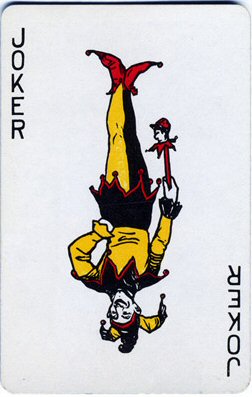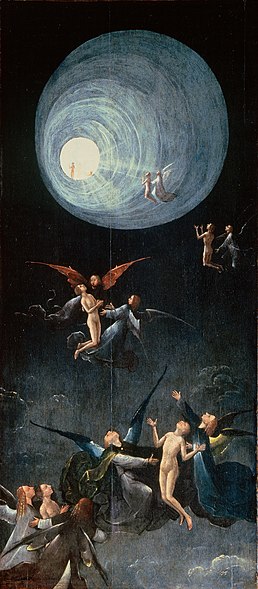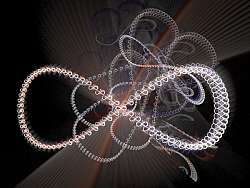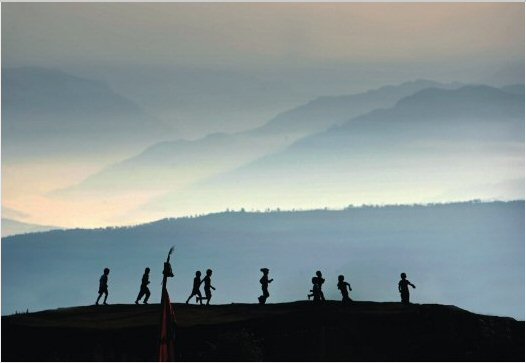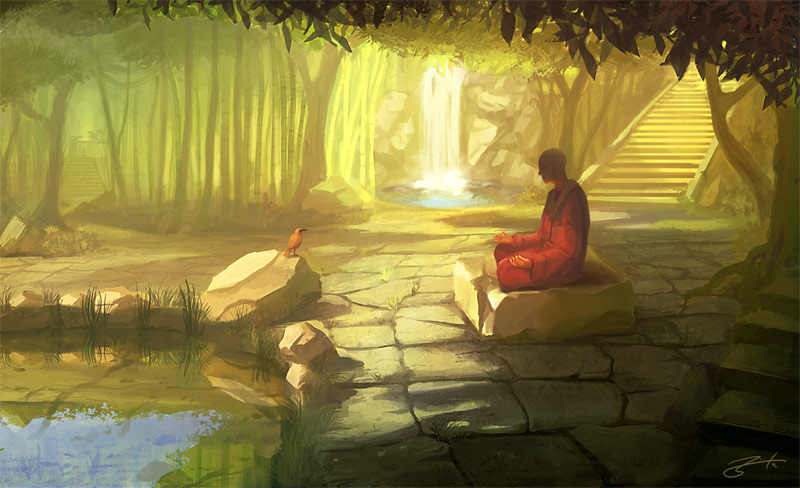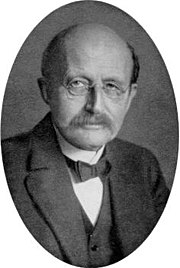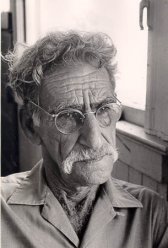

|
No more software bugs Computer engineers at Google announced today that they have created a program that catches and corrects mistakes in software. They have a simple menu-driven program with a drag-and-drop interface. You take the file for your old, buggy code and feed it to the Google Glitch Filter. Design flaws and logic errors in your source are replaced by pristine, easy-to-read program instructions that eliminate these common errors. Like all Google software, it is distributed free to the public. A beta version is available now at www.google.com/google-eyes. Microsoft blindsided A spokesman for Microsoft admitted that the Redmond Behemoth had no research program in this area. “Seventy years ago, mathematician Alan Turing published his famous mathematical proof that no such program was possible. We believed him.” Asked to comment on the Turing theorem, Google’s Ricardo Reyes responded, “Nyeh, nyeh da boo boo.” In an email message, scientists at neighboring Genentech in Palo Alto confirmed that the company is working on adapting Google’s algorithm to human DNA, correcting mutations, birth defects, and even personality flaws. “This is a difficult program to write. Luckily, all we have to do is get somewhere close to the solution, and from there we’ll let the program debug itself.” Then we can all be perfect. |
1 April 2008
|
|
Good without glamor “Trying to think about how we can make a big difference, we must not ignore the small daily differences we can make which, over time, add up to big differences that we often cannot foresee.” — Marian Wright Edelman “One of the symptoms of an approaching nervous breakdown is the belief that one’s work is terribly important.” —Bertrand Russell |
2 April 2008
|
|
To hear God’s voice in the call of a sparrow John Burroughs began promoting the protection of nature in the 1850s
when there were no national parks or conservation movements.
He was concerned about the exploitation and destruction caused
by rapid expansion and industrialization. He wanted to share the beauty he saw
in nature in an effort to save America's wilderness resources.
Burroughs is often recalled as an eccentric woodsman with a long beard
who loved his native New York countryside.
But few people are aware of Burroughs’s impact during his lifetime
on the consciousness of the American public. “To find the universal elements enough; to find the
air and the water exhilarating; to be refreshed by a morning walk or an
evening saunter; to be thrilled by the stars at night; to be elated over
a bird’s nest or a wildflower in spring — these are some of the rewards of the simple life.” For Burroughs, an appreciation and advocacy for nature were seamlessly connected to the pantheist philosophy which he helped to formulate. “One of the hardest lessons we have to learn in this life and one that many persons never learn, is to see the divine, the celestial, the pure, in the common, the near at hand — to see that heaven lies about us here in this world.” |
3 April 2008 |
|
Does consciousness reside in the brain? Lessons from near-death experiences Dr. Pim van Lommel is a Dutch cardiologist who collected accounts of his patients’ experiences during the time their hearts were stopped and there was no blood flow to their brains. These patients had no detectable electrical activity in their brains. By standard Western theories, their brains were dead, and they could not have had any experiences. Yet some of these people – about one in five – report vivid memories from this time. The patients never report fear, and frequently speak of deep peace and connection, white light at the end of a tunnel, bliss. Conventional medicine would like to explain these stories as hallucinations or fabrications of the brain. But in some cases, people saw and remembered things around them. Here is a story recounted by a coronary care nurse: “During night shift an ambulance brings in a 44-year old cyanotic, comatose man into the coronary care unit. He was found in coma about 30 minutes before in a meadow. When we go to intubate the patient, he turns out to have dentures in his mouth. I remove these upper dentures and put them onto the ‘crash cart.’ After about an hour and a half the patient has sufficient heart rhythm and blood pressure, but he is still ventilated and intubated, and he is still comatose. He is transferred to the intensive care unit to continue the necessary artificial respiration. Only after more than a week do I meet again with the patient, who is by now back on the cardiac ward. The moment he sees me he says: ‘O, that nurse knows where my dentures are.’ I am very surprised. Then he elucidates: ‘You were there when I was brought into hospital and you took my dentures out of my mouth and put them onto that cart, it had all these bottles on it and there was this sliding drawer underneath, and there you put my teeth.’ I was especially amazed because I remembered this happening while the man was in deep coma and in the process of CPR. It appeared that the man had seen himself lying in bed, that he had perceived from above how nurses and doctors had been busy with the CPR. He was also able to describe correctly and in detail the small room in which he had been resuscitated as well as the appearance of those present like myself. He is deeply impressed by his experience and says he is no longer afraid of death.” Following up after such events, Van Lommel finds that typically those who have such experiences report that their lives are altered in three ways:
Home page of the Intl. Assoc. for Near-Death Studies |
4 April 2008 The Flight to Heaven by Hieronymus Bosch, c 1500
|
|
“Experience your boundlessness” “It’s not the yoga that you do but the courage that you bring to your practice that’s going to change your life.” Many of the exercises that comprise kundalini yoga practice combine repetitive motions with rapid breathing. The genius behind these exercises is that they very quickly make you want to stop. They command your attention, and won’t let you daydream. Long before you are physically exhausted, you will feel mentally irritated and find yourself thinking, ‘How much longer?’ And yet...if you do persist, face your own annoyance and impatience, you may arrive at a mood beyond mood, a place where you feel satisfied and full with each moment of life. |
5 April 2008 |
|
Two kinds of infinities There are countable and uncountable infinities. If you can make the items into an endless list, then they are countable. The simplest example is the natural numbers 0, 1, 2, 3… By these rules, you couldn’t get all integers … -3, -2, -1, 0, 1, 2, 3… because this list is infinite in both directions. However, it’s not hard to integrate the negative numbers in a single list: You just alternate like this: 0, 1, -1, 2, -2, 3, -3, 4 … This way you cover all integers, positive and negative, in a list that has a definite beginning and is infinite in only one direction. How about fractions? Are the rational numbers countable? Yes! with a little ingenuity, you can devise a scheme for listing them. Think of the numerators and denominators separately, and make sure you increment them both in some ‘fair’ way. For example 0/1, 1/1, 0/2, 1/2, 2/2, 0/3, 1/3, 2/3, 3/3 … (If you prefer, you can go back and ‘cross out the duplicates’. For example, you don’t really need both 0/1 and 0/2.) This may seem surprising or counter-intuitive. There seem to be so many more fractions than there are whole numbers, and yet mathematically, they’re the same because they’re both countable. Rational numbers can be written as decimals that either have an end (0.25) or go on repeating endlessly (0.33333…) How about including irrational numbers like
How about numbers like e and π and sin(√2)? These numbers are not the solution to any algebraic equation. Like the algebraic numbers, they are decimals that never repeat. But unlike the algebraic numbers they are uncountable. It’s true — not just that no mathematician has ever been able to come up with a scheme for arranging them in a list. There’s actually a proof that no such list can exist. The transcendental numbers are an uncountable infinity. What else is uncountable? How about all possible mathematical proofs? Countable or uncountable? The answer has surprising consequences, and I’ll talk about it next Sunday. |
6 April 2008
|
|
This poem belongs to you This poem it was begun years ago knowing it would come In fact you are now It has been long years You have remembered —from The House of Belonging, by David Whyte |
7 April 2008
|
|
Difference of opinion “Life is act, and not to do is death.” “The very least you can do in your life is to figure out what you hope for.
And the most you can do is live inside that hope.” |
8 April 2008
|
|
Blind shrimp use seeing-eye fish Shrimp have terrible eyesight, and might be especially vulnerable to predators, except that each one keeps a goby fish to act as a watchdog and seeing eye. The shrimp builds a burrow in the sand and shares it with the fish, grooms the goby fish and keeps it clean. The goby sits in the entrance to the shelter and communicates whether there are predators about and when the coast is clear with swishes of its tail. Symbiosis is everywhere in nature, and like several other features of the biosphere (sex, aging, genetic diversity, ecosystem stability) mutualism defies narrow notions of evolutionary mechanisms based on the selfish gene.. |
9 April 2008 |
|
Every happiness is the child of a separation it did not think it could survive. Wolle die Wandlung. O sei für die Flamme begeistert, Was sich ins Bleiben verschließt, schon ists das Erstarrte ; Wer sich als Quelle ergießt, den erkennt die Erkennung; Jeder glückliche Raum ist Kind oder Enkel von Trennung, Want the change. Be inspired by the flame What locks itself in sameness has congealed. Pour yourself out like a fountain. Every happiness is the child of a separation ~
Rainer Maria Rilke
|
10 April 2008
|
|
Mad Argentine Musicians Alberto Ginastera, born this day in 1916, composed with a wild, ecstatic energy that makes a minute seem like a marathon. He frequently took ethnic dance forms as a starting point, and created a challenge of emotional intensity as well as virtuoso stamina for the performer. Martha Argerich, a fellow Argentinian, is known for the wild, ecstatic energy of her performances. The right pianist for the job... Listen to Argentine Dance Op.2#1, Op.2#2, Op.2#3 |
11 April 2008 |
|
the shift to a life-sustaining civilization The Great Turning is a name for the essential adventure of our time: the shift from the industrial growth society to a life-sustaining civilization. The ecological and social crises we face are inflamed by an economic system dependent on accelerating growth. This self-destructing political economy sets its goals and measures its performance in terms of ever-increasing corporate profits--in other words by how fast materials can be extracted from Earth and turned into consumer products, weapons, and waste. A revolution is underway because people are realizing that our needs can be met without destroying our world. We have the technical knowledge, the communication tools, and material resources to grow enough food, ensure clean air and water, and meet rational energy needs. Future generations, if there is a livable world for them, will look back at the epochal transition we are making to a life-sustaining society. And they may well call this the time of the Great Turning. It is happening now. Whether or not it is recognized by corporate-controlled media, the Great Turning is a reality. Although we cannot know yet if it will take hold in time for humans and other complex life forms to survive, we can know that it is under way. And it is gaining momentum, through the actions of countless individuals and groups around the world. To see this as the larger context of our lives clears our vision and summons our courage. |
12 April 2008 |
|
Ω = 0.0078749969978123844... Here is what Greg Chaitin figured out, based on the insights of Alan Turing and Kurt Gödel: In any computer language, there is a finite number of symbols, from which all programs can be created. So you can think of every computer programs as just a long word. Sort these words out from the shortest (1 letter) on up, and within all programs of a given length, put them in alphabetical order. (In some languages, blank space is important, and you may need to think of blank space as one letter of the alphabet.) Next, go through and cross out the ones that contain syntax errors, so that a computer would never even try to execute them. For example, they may contain an open parenthesis without a closing, or they may specify a loop without a terminating condition. You can think of doing this as you go along; for example, as you finish making the alphabetized list of all programs of length 7 symbols, you make another pass through your list and eliminate the nonsensical ones. This well-defined procedure yields a list of all computer programs. It’s an infinite list, with a beginning and an ordering and no end. Now, some percentage of these programs will ‘halt’. They will come to a natural conclusion, and the computer will produce some result (a number or a list of numbers, or a string of text) and then the computer will be ‘done’ with the program. There are other programs that will never halt, stuck in some kind of infinite loop, trying something over and over that never attaining the criterion for conclusion. Chaitin asked the question, what percentage of your list of programs will eventually ‘halt’? He called this number Omega.* Omega is a number somewhere between 0 and 1. It’s well-defined, in that you have a procedure for calculating its value. More precisely, you have an infinite procedure that will give you better and better approximations to Omega the longer you continue. But it’s different from computing, say, the value of π. You can calculate the first 40 digits of π and be sure that as you keep going in your calculation, only digits beyond those 40 are at stake. But Omega is more mysterious. There’s no way to know how far you are along in the computation, and which digits have been established beyond further change. Here’s the punch line: The single number Omega contains all of mathematical knowledge. If you knew Omega, you would know the answer to every question that can be asked about numbers (or geometrical objects, which can be represented as coordinates). You would be able to decide, for every theorem, whether it is true or it is false – even some theorems for which no proof may exist†. Omega is the ultimate repository of mathematical truth. — Josh Mitteldorf *There’s a little further homework to be done in defining Omega rigorously. How are you to know when to give up on a computer that’s running a program and say it will never halt? Chaitin pointed out you don’t ever need to make that call. Just start the first program in your list, run ‘one step’ of that program, then start the second program and run it for one step, and the first program for an additional step, then start the third program and step the first two programs, and so forth. Whenever any program terminates, make a note of that fact, and update your estimate of Omega, dividing the number of programs that have terminated by the total number, including those that are still running. † There are some mathematical statements that are true but not provable. In fact, there are an infinity of such statements. This is Gödel’s theorem. These statements are part of Omega, but the catch is that they’re in the part of Omega that we never get to see. If we were to set out to compute Omega§, we would, along the way, encounter computer programs that correspond to proofs of every provable theorem. A proof, by definition, is finite, and there are a countable number of them, so with enough patience we would eventually come across every proof. But at whatever point we give up, there are some computer programs already in our list that are still running, but will soon come to a halt, while others in our list will never halt; and because we stopped at some finite time, we don’t yet know which is which. § In fact, a computer has been programmed to calculate Omega, and after months of computation, it generated the first 19 digits, reproduced in the header above. How can they be sure that these 19 digits won’t change as the computation proceeds? I’ve said that as you calculate Omega, you can’t know how much progress you’ve made. In fact, Chaitin himself billed Omega as being the ultimate in unknowability. ‘Strongly non-computable’ is the way he put it. Then along come Calude, Dinneen and Shu, and they find the value of Omega to 19 digit accuracy. I don’t understand how they did it. |
13 April 2008
|
|
Mind and awareness; Ice and water If you conquer the primordial nature by distinguishing mind from awareness |
14 April 2008 |
|
The Inventor of Invention Many ancient machines were in common use in Leonardo’s time. For example, water wheels turned millstones to grind grain and Archimedes’s screws lifted water from streams providing a ready supply for drinking and washing. Craftsmen in Leonardo’s time knew how to build and repair the familiar kinds of machines. The idea of inventing new kinds of machines, however, would not have occurred to them.... Leonardo set out to write the first systematic explanations of how machines work and how the elements of machines can be combined. He applied scientific reasoning to combine simjple parts to create new inventions. (Revolutionary?) His tremendous talents as a illustrator allowed him to draw his mechanical ideas with exceptional clarity. Five hundred years after they were put on paper, many of his sketches can easily be used as blueprints to create perfect working models. Leonardo was constantly experimenting, and most of his experiments were failures. We might be tempted to call them naive. There were frequent disasters, as when he mixed egg yolk and vinegar into the paints used for The Last Supper. The intent was to make it possible for him to paint over mistakes and second thoughts, but the side-effect was to cause the paint to peel off the plaster. Whoever in discussion adduces authority uses not intellect but rather
memory. Those men who are inventors and interpreters between Nature and
Man, as compared with boasters and declaimers of the works of others,
must be regarded and not otherwise esteemed than as the object in front
of a mirror, when compared with its image seen in the mirror. Though I may not, like them, be able to quote other authors, I
shall rely on that which is much greater and more worthy— on experience,
the mistress of their Masters. |
15 April 2008 |
|
Bringing out their best “A man is like a bit of Labrador spar, which has no lustre as you turn it in your hand until you come to a particular angle; then it shows deep and beautiful colors. There is no adaptation or universal applicability in men, but each has his special Talent, and the mastery of Successful men consists in adroitly keeping themselves where and when that turn shall be oftenest to be practiced.” |
16 April 2008
|
|
Beginners * Karen Silkwood is widely thought to have been murdered by her employers at a nuclear power plant where she became too curious about violations of safety standards. Who is Eliot Gralla? † This quote is from
Algernon Charles Swinburne, the Victorian poet |
17 April 2008
|
|
Omnis Spiritus Laudes Dominum Reasons briefly set down by th’author, to perswade every one to learne to sing.
~ William
Byrd (1543-1623) (as cited by
David Gordon) |
18 April 2008
|
|
“Prayer is not asking for the changes we imagine that we want, but asking to be changed in ways that we cannot imagine.” |
19 April 2008 |
|
Faith My initial attraction to yoga and meditation derived from a desire to gain power over my own mind and body, and perhaps even influence events outside. Focused intention was a way to get what I wanted. But as I’ve matured, I'm less sure about what it is that I want, and even less confident that getting what I want will be satisfying or contribute to the general wellbeing, or my own. Hence more of my meditation is focused on appreciation of what is, and affirming a Panglossian faith that all is for the best. This is not to be confused with an illusion that somehow the world is perfect the way it is; even less is it an invitation to passivity. Certainly if the world is perfect it is not the present state that is perfect, but the entire time sequence, the evolution of all that is, as viewed from a vantage outside of time. Part of that perfection is my compelling drive to heal and to help resolve conflict, to teach, to spread truth and understanding. So, Is the world perfect? I hold with Bill Clinton: It all depends on your definition of ‘is’. ~ Josh Mitteldorf |
20 April 2008 |
|
The more we know about genes, the less we understand ...genes need to become active at the right time and place. Think about it: Each one of your cells contains genes that can produce hair and toenails, and can crank out neurotransmitters and digestive enzymes. If all your genes did churn away, your body would become a hideous, useless jumble. Our life depends on the courteous restraint of our genes.... All living things, ourselves included, turn genes on and off in a similar way, by making switch-like proteins called transcription factors. And as scientists have identified more of these, they’ve discovered something remarkable: They form a chain of command. The job of some transcription factors is to switch others on and off, and they in turn are controlled by other transcription factors. Even a seemingly simple microbe like E. coli has an impressive hierarchy. Just nine genes rule over about half of the 4,000-odd genes in E. coli. E. coli’s network allows it to respond quickly to the challenges it meets, from starvation to heat to the loss of oxygen. It can rapidly reorganize itself, switching on hundreds of genes and switching off hundreds of others. What makes this network all the more impressive are the feedback loops that keep it from spinning out of control. When one gene switches on, for example, it may make a protein that shuts down the gene that switched it on in the first place. Yet even as scientists uncover this network, they discover yet another mystery. In the latest issue of Nature, scientists reported an experiment in which they wreaked havoc with E. coli’s network. They randomly added new links between the transcription factors at the top of the microbe’s hierarchy. Now a transcription factor could turn on another one that it never had before. The scientists randomly rewired the network in 598 different ways and then stepped back to see what happened to the bacteria. You might expect that they all died. After all, if you were to pop open the back of an iPod and start linking its components together in random ways, you’d expect it to crash. But that’s not what happened. About 95 percent of the rewired bacteria did just fine with their new networks. They went on with their lives, feeding, growing and dividing. Some even performed better than microbes with the original wiring, under some conditions. Carl Zimmer, writing in Wired Magazine this month The lesson is clear: machines designed by humans are fragile, in that errors and defects in one part can render the whole useless. But biological machines are robust and remarkably fault-tolerant. How do they do it? |
21 April 2008
|
|
Grow vegetables We are taught to think in terms of the consequences of our actions; not the Categorical Imperative of Kant (‘What would the world be like if everyone behaved the way I behave?’) but the more direct question of individual impact. Thinking in this way, it is difficult to connect our individual acts of conservation or restraint with the fate of the Planet. Michael Pollan answers the question, Why Bother? Going personally green is a bet, nothing more or less, though it’s one we probably all should make, even if the odds of it paying off aren’t great. Sometimes you have to act as if acting will make a difference, even when you can’t prove that it will. That, after all, was precisely what happened in Communist Czechoslovakia and Poland, when a handful of individuals like Vaclav Havel and Adam Michnik resolved that they would simply conduct their lives “as if” they lived in a free society. That improbable bet created a tiny space of liberty that, in time, expanded to take in, and then help take down, the whole of the Eastern bloc. So what would be a comparable bet that the individual might make in the case of the environmental crisis? Havel himself has suggested that people begin to “conduct themselves as if they were to live on this earth forever and be answerable for its condition one day.” Fair enough, but let me propose a slightly less abstract and daunting wager. The idea is to find one thing to do in your life that doesn’t involve spending or voting, that may or may not virally rock the world but is real and particular (as well as symbolic) and that, come what may, will offer its own rewards. Maybe you decide to give up meat, an act that would reduce your carbon footprint by as much as a quarter. Or you could try this: determine to observe the Sabbath. For one day a week, abstain completely from economic activity: no shopping, no driving, no electronics. Even better, he suggests planting a garden as the most connected action we can take. The single greatest lesson the garden teaches is that our relationship to the planet need not be zero-sum, and that as long as the sun still shines and people still can plan and plant, think and do, we can, if we bother to try, find ways to provide for ourselves without diminishing the world. — Michael Pollan, writing in the NYTimes Magazine |
22 April 2008 |
|
Max Planck “Anybody who has been seriously engaged is scientific work of any kind realizes that over the entrance to the gates of the temple of science are written the words: ‘Ye must have faith.’ It is a quality which the scientist cannot dispense with.” — Max Planck, born this day in 1858, was the earliest visionary to realize that classical mechanics was fundamentally at odds with reality, and to lay the foundation for quantum theory. |
23 April 2008
|
|
Is it more important to produce art or to take political action? He was a defiant young poet and a wise old poet. In between, he was a labor organizer. River of our substance Into happiness, rising Into what is there. I know of no other happiness In polar mist But the sense Who are most northerly. The marvel of the wave Permanence; thought leaped on us in that sea Of place, and speak Upper World a substantial language “Is it more important to produce art or to take political action? Of course I cannot pretend to answer such a question. I could point this out, however, that art and political action are in precise opposition in this regard: that it can always be quite easily shown that political action is going to be valuable; it is difficult to ever prove that political action has been valuable. Whereas art is precisely the opposite case; it seems always impossible to prove that it is going to be valuable, and yet it is always quite clear that the art of the past has been of value to humanity. I offer it only as a suggestion that art lacks in political action, not action. One does what he is most moved to do.” – George Oppen, a man who did both, was born one hundred years ago today. All poets spend more time not writing than writing; what
distinguishes Oppen’s silence is not so much its length as its
circumstance. Having joined the Communist Party in 1935, Oppen organized
the Farmers’ Union milk strike, made patterns for Grumman Aircraft,
landed in Marseilles with the 103rd Antitank Division, received a Purple
Heart, moved to Mexico to avoid being called before the House
Un-American Activities Committee, built houses, made furniture and
devoted himself to his wife and daughter. |
24 April 2008
|
|
Your mission, should you choose to accept it... A day will come when you, too, must share your knowledge of things and people. A singular witness of a happening uniquely revealed to you, in words as yet unknown, you will reveal to your brothers the ineffable wisdom of your heart. —Irenee Gulane Dioh |
25 April 2008 |
|
Fifty-eight Unless the mind, body, and spirit are equally developed and fully integrated, no spiritual peak or state of enlightenment can be sustained. This is why extremist religions and ideologies do not bear fruit. When the mind and spirit are forced into unnatural austerities or adherence to external dogmas, the body grows sick and weak and becomes a traitor to the whole being. When the body is emphasized to the exclusion of the mind and spirit, they become like trapped snakes: frantic, explosive, and poisonous to one’s person. All such imbalances inevitably lead to exhaustion and expiration of the life force. True self-cultivation involves the holistic integration of mind, body, and spirit. Balancing yin and yang through the various practices of the Integral Way, one achieves complete unity within and without. This manifests in the world as perfect equilibrium, and perfect grace. —Lao Tzu, Hua Hu Ching, translated by Brian Walker |
26 April 2008 |
|
Liberation: beyond ‘the Greatest Good for the Greatest Number’ It’s not an exaggeration to say that modern Western civilization is rooted in the social philosophy of the Enlightenment, as articulated by Hobbes, Locke and Rousseau.
This is the philosophical underpinning of our social contract, the unspoken framework within which we discuss policy and social organization. It is a philosophy that I absorbed early in life, and for which I became a strident advocate in my teens and twenties. But in middle age, I became aware that this view of the world is fundamentally flawed. The problem is that happiness for each of us as individuals is so intimately tied to our families and our community that it makes no sense to separate out that which is good for each of us in isolation. In fact, for most of us, there is no greater fulfillment in life than the feeling that we are deeply connected to others, and are contributing with our thought and our efforts and our caring to some collective good. (This has always been the world-view underlying the great civilizations of Asia, and in just the last generation, Western psychology has documented with statistics and experiments that individual happiness is only weakly related to getting what we want. Listen to Dan Gilbert talk about happiness. Read The Happiness Hypothesis of Jonathan Haidt.) In the old, individual view, the idea of liberation was easy. Freedom for the individual meant freedom from rules and constraints. This is ‘life, liberty, and the pursuit of happiness’. But in the new, communal view, freedom is a more complex and difficult affair. Freedom is ever so much more than a government that lets us alone and a level playing field on which to go after what we want. I now believe that it only makes sense to speak of freedom in the context of a just and inclusive community. It’s common to hear the slogans, ‘None of us is free until we are all free’, and ‘There can be no freedom without justice.’ But the truth is yet more radical: We are only free when our community affords us opportunities to participate, to connect, to work and to love in ways that feel wholesome for us as individuals, and which contribute to the communal welfare. It is not enough to throw off the shackles of oppression; we must create together the institutional underpinnings of our communal life. — Josh Mitteldorf |
27 April 2008 |
|
The Great Affair The great affair, the love affair with life, Where there is no risk, the emotional terrain is flat and unyielding, It began in mystery, and it will end in mystery, ~ Diane Ackerman ~ |
28 April 2008 |
|
Three is much more than two The orbit of a planet around a star is a completely solved problem. Classically, Isaac Newton was able to show that the orbit is an ellipse or a parabola. Erwin Schrödinger solved the corresponding quantum mechanical problem, the hydrogen atom. How about three bodies, say two planets orbiting a star? It would seem to be a little more complicated, but it turns out to be a great deal more complicated. Three bodies bound by gravitation (or any other force) don’t follow a fixed orbit repetitively, but instead do every conceivable thing. They may look as though they are in a stable orbit for awhile, then jump without warning into a very different configuration. The equations are known. The paths are determined. But the motions cannot be solved to give a prediction of what the planets will do after even a short while together. This is called ‘classical indeterminacy’, or more colorfully, chaos. One of its characteristics is that any small uncertainty in our knowledge of the initial positions of the bodies grows rapidly to become ‘we have no idea where it will lead’. Another consequence is that if you follow the three bodies from any initial configuration, they will eventually lead you (arbitrarily close) to any other configuration. Every ‘orbit’ will, over time, become every other ‘orbit’ (consistent with the same energy and angular momentum). Thus physics is a lot less useful than we thought it ought to be. The idea that the universe evolves like clock-work is an illusion, because its predictions are determined in principle, but unknowable in practice. This is true for three bodies in classical mechanics. For more bodies, there can only be more surprises. Physicists work with the statistics of large systems, rather than even attempt an explicit solution. The basic mathematics and the prediction of chaos was worked out by Henri Poincaré in the last part of the 19th century. «La pensée n’est qu’un éclair au milieu d’une longue nuit. Mais c’est cet éclair qui est tout.»
|
29 April 2008 |
|
Nor ever chaste, except ye ravish me John Donne has recently come out with a remarkable sonnet, describing the claim that the scientific world view has on his heart, and entreating God to rescue him from reason. Batter my heart, three-person’d God; for you —Holy Sonnet XIV, ca 1615 Stuart Kauffman is about to release a remarkable book in which he challenges readers to release themselves from the thrall of the Galilean worldview, and stop looking for answers to values questions in reductionist science. Excerpt My aim is to reinvent the sacred. I present a new view of a fully natural God and of the sacred, based on an emerging scientific worldview. This new worldview reaches further than science itself and invites a new view of God, the sacred, and ourselves—ultimately including our science, art, ethics, politics, and spirituality. My field of research, complexity theory, is leading toward the reintegration of science with the ancient Greek ideal of the good life, well lived. It is not some tortured interpretation of fundamentally lifeless facts that prompts me to say this; the science itself compels it. |
30 April 2008 |
